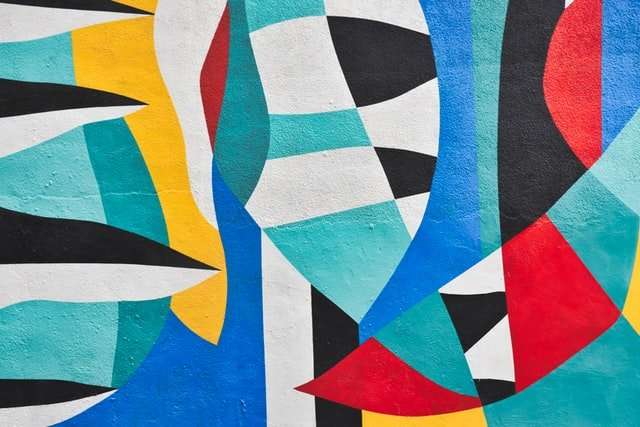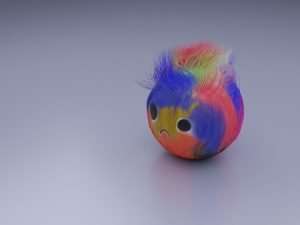Art created with the use of vector graphics is an excellent way to convey a message. You can make art work that has a message in it. The message can be as simple as a company logo or as complex as a political cartoon. There are many advantages to this type of art, chief among them being its versatility.
In this article I will discuss how to use a vector graphics program and what it can do for you.
Vector graphics is the creation of images using mathematical functions. These images can be infinitely scaled and often contain more information than raster images such as bitmap or jpeg. Vector graphics is different because it uses mathematics to describe the image rather than pixels. This allows you to create artwork that is infinitely scalable without losing any detail or quality.
As with most things there are many applications for vector graphics imagery, from logos and illustrations to technical drawings and maps. It is important to choose the right application for your type of project so that you do not waste time creating something that cannot be used for what you need it for.
Vector files are not limited in their uses like bitmap or jpeg files are; however, they can only be used by certain programs or applications and they have limitations on size, resolution, and color depth (256 colors
Vector graphics allow you to create images that are huge without losing clarity, as well as being able to scale down without loss of quality.
We live in a 3D world and although we experience it as a 3D space, most of the time our images are flat and 2D. The way we view the world affects how we perceive it and the way we create images. We can use vector graphics software to make these flat images come alive.
Picture this… You’re sitting in the park on a beautiful sunny day with a cup of coffee and you’ve brought your favorite magazine with you just in case there’s nothing worth reading in the newspaper. You’re enjoying yourself, but then you spot something unusual: two squirrels having a fight over an acorn. You get your camera out and take two pictures of them but they don’t turn out very well because they were moving so quickly. So, you think “I wonder if I could draw them?” and grab a pencil from your bag. Now what? Do you begin sketching them on your pad or do you pull out your trusty PC laptop with your drawing program?
While many people would probably opt for the latter, most people have no idea how to use a vector graphics program for drawing or design work
The idea is not to get you to switch right away, but to open your eyes to the possibilities that are available if you decide to switch.
Vector graphics are everywhere and they are growing more popular by the day. This is something that you should probably take a look at because these applications can greatly improve your workflow and overall productivity.
What is vector graphics anyway? Well, vector graphics can be defined as a “type of image created with mathematical expressions in order to generate computer or printer-generated images.” Basically you can use vector graphics for creating logos, illustrations, and anything else that’s related to artistic design. If you want to learn more about vector art check out this article .
Vector graphics programs are used to make logos, illustrations, posters and animated illustrations. They are also used to create clipart for websites, for example.
Vector graphics programs are very good at creating flow lines and making artistic shapes, so it is possible to make very exciting animations using them. Most vector programs do not have a preset limit on the number of colors that can be used in an image, and this means that they can use up to millions of colors for images without having to convert them down to 256 colours or less like other image editing software.
Tutorials about vector graphics programs should be able to explain some of the main things that people need to know about using these types of images. This way, people will be able to see why they are useful and how they can be used in different ways.”
Vector graphics is the most common type of graphics program used in print and web design. Vector graphics programs are more popular than raster based graphics programs because they allow for more flexibility in editing image content. Raster images, also known as bitmap images, use a grid-like pattern to display images. For example a raster image may have a definite pixel width and height that are displayed on the screen. A vector graphic would not be limited by this grid-like pattern and could instead be edited at any size with no loss in quality.
// http://www.vectordesignerblog.com/
// https://www.facebook.com/groups/VectorDesignerCommunity/
Name:Write your own biography
The first step to mastering a vector graphics program is learning to draw. These tips will help you get started.
Step 1: Choose a ToolThe most basic tool in your arsenal is the pen tool. It’s default setting is a red line, with blue anchor points for start and end points. To create more complex shapes, simply add anchor points and draw lines between them.
Step 2: Tools of the TradeYou can change the appearance of your pen tool by clicking on it. This will bring up a menu that contains many different tools including “Bezier Curve,” “Freehand,” and “Path.” These tools are ideal for creating intricate designs.
Step 3: Get Some EducationTexturing your vector art is an important part of using Adobe Illustrator effectively. You can achieve more than one texture in various ways. One way is to use a variety of brushes and different kinds of paper in your design. Another way to achieve different textures is to change the opacity and color settings on your art while you are working on it. If you aren’t familiar with these settings, experiment with them until you find an effect that works well with your design.
How-to-draw-vector_art
What is vector art? Vector art is created by drawing lines to create the art. The lines are then saved as a computer file which can be easily edited later, and then scaled to any size without losing quality.
When you save a picture as a .jpg or .gif file, the computer interprets the pixels in the image as colors and shades, which can look blocky or pixelated when scaled up (or down). Whereas vector graphics are shapes that are drawn with lines, so they can look smooth no matter what size you scale them to.
Vector art is often used for logos and web images since it keeps its quality when resized. But vector files can also be edited using programs such as Adobe Illustrator.
There are lots of how-to’s online for drawing vector art, but I’ll talk about some of my favorite techniques and share the results of my experiments!



